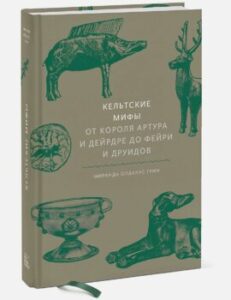Описание книги
More info A fascinating journey into the world of Celtic mythology, combining archeology, history and fantasy. Modern horror films — whether about vampires, ghosts, or reborn Egyptian mummies — allow humans to explore the darkest aspects of human nature while remaining in a safe environment. In a sense, the same thing happens with myths. But myths are more complex and multifaceted. This book is an illustrated guide to the world of Irish and Welsh myths, the world of gods and heroes, magic and monsters. Under the cover, you will meet spirits and druids, talking animals and magic trees. Its author — British archaeologist and scientist Miranda Oldhouse Green — has done a great job to reveal to us the cultural heritage of Great Britain and Ireland, to tell us about how and by whom myths were transmitted and how they influenced our world. Fragments of texts, photographs of archaeological finds and other documentary evidence make the distant era closer and more understandable. From the Author The focus of this book is on the myths surviving in early medieval literature in Ireland and Wales that were recorded in writing between the 8th and 14th centuries AD. With great trepidation I took up the book with the definition of «Celtic» in the title. Since the early 1990s. archaeologists seriously question the appropriateness of using this term to describe the ancient peoples of the Iron Age in Western and Central Europe. The concept of «Celts» was especially condemned in relation to ancient Britain. While many ancient authors mention such a people as Gauls (roughly speaking, meaning the territory of modern France, Switzerland, Germany west of the Rhine, parts of northern and eastern Iberia and the extreme north of Italy) or the Celts, no ancient author ever called so about the population of Britain. The Romans simply called him Britanni. Who is this book for Lovers of history, mythology and their place in modern times. For everyone who wants to immerse themselves in the life of the peoples of the past. …
FAQ
